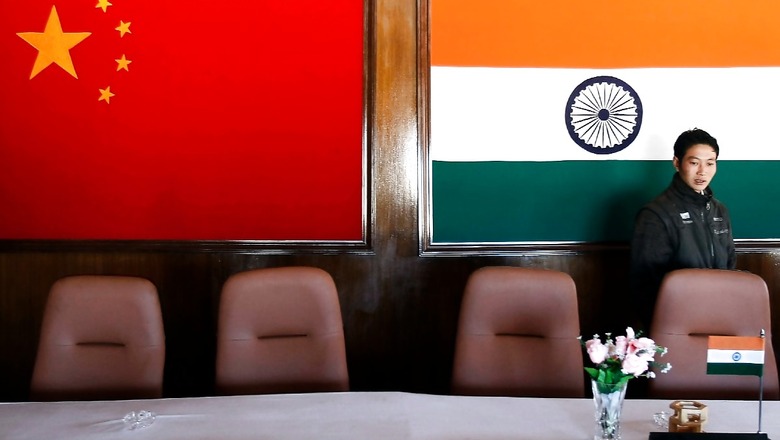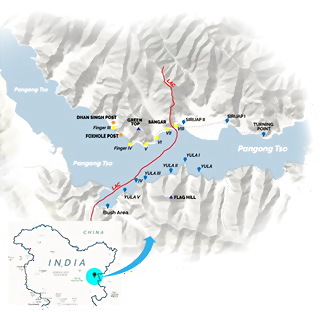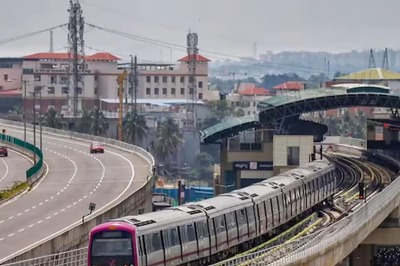
views
Even as military commanders prepare for a fifth round of talks to defuse the showdown on the Line of Control in Ladakh, government sources have told News18 that there is growing concern the negotiations could deadlock over the People’s Liberation Army’s insistence on retaining troops in some areas it occupied this summer, citing tactical concerns caused by Indian Army border infrastructure.
Though both sides have in principle agreed to restore the status quo ante, two senior government officials said their perception of what this previously existing situation actually was remains irreconcilable in several sectors, the sources said.
Even though the PLA has thinned out, its forces on Finger 4 and 5 — part of a series of eight ridges radiating out from the north bank of the Pangong Lake — it has declined to vacate a small patch on pastureland on Finger 4, named Green Top by Indian troops, because of its rich vegetation. India asserts that the LAC runs through Finger 8, the furthest east of the ridges, but holds ground until Finger 3.

PLA negotiators, government sources have said, holding Green Top is necessary to observe potential threats to their positions around Sirijap, inside Chinese-held territory, emanating from India’s main base on Finger 3, Dhan Singh Post, which is now connected by road.
Fearing it could end up legitimising earlier territory-grabs by the PLA, an intelligence source familiar with the negotiations said New Delhi has been reluctant to negotiate based on the status quo immediately before China launched significant intrusions in April.
The PLA, in turn, is demanding that India roll back roads and other border infrastructure it built 2014 onwards — a response to large-scale works by China in earlier years, and repeated incursions across the LAC.
North of Pangong, disputes over tactical issues also pose formidable challenges to negotiators. Even though troop numbers have thinned out in the Gogra and Hot Springs areas, near Point 15, 16, 17 and 17A, the sources said, there is no agreement on what the final fall-back positions of the two armies will be.
PLA troops have, further north, continued to work on a road at a position near the Galwan Valley known as Patrolling Point 13. The works, the PLA has argued in negotiations, has been necessitated by similar Indian construction activity around Point 14, heading into the Galwan valley.
The LAC is physically marked, north of Pangong Lake, by a series of Patrolling Points, running south in serial order from the Karakoram Pass to Point 17A, near the Hot Springs area.
In Depsang, Indian troops assert their claims to the LAC by patrolling a route that runs along the LAC from Point 10, near the forward base at Burtsé, to Point 13. PLA troops have, since 2017, sought to block Indian patrols from heading along this route by interdicting them at a rock-face code-named Bottleneck, using roads linking the area to their own base.
The PLA’s road works at Point 13, the Indian Army fears, could eventually allow it to cut off a great arc across the Depsang Plains, denying Indian troops access to hundreds of square kilometres of territory.
“Ever since the bloody clashes in the Galwan valley, the effort has been to get both armies to step back, and minimise the risks of war breaking out,” a senior official said. “That process has had some measure of success — but we’re getting to the really difficult discussions now.”
The genesis of these disputes, in some cases, goes back decades. In the midst of the 1999 Kargil war, desperate for troops acclimatised to high altitudes, India had vacated a position it held near Finger 7, code-named Sangar. The PLA exploited the decision, building a network of roads that ensured Sangar could not be reoccupied after the 1999 war. That road network has now allowed China to seize and hold ground up to Finger 4.
New Delhi has, since 1999, asserted the right to send patrols up to Finger 8. The Indian Army’s efforts to assert that claim, in the face of obstruction by the PLA, led to bloody clashes between the Indian Army and the PLA troops in May, as troops brawled using rocks, rods and their fists.
To the south of Galwan, the two armies also have differences of perception on their territorial claims in Demchok, and even the Zulung La pass — where the PLA scared away Indian shepherds, and painted red markings over rocks, as early as 2009.
“Each point of dispute will now have to be negotiated singly,” one source said. Last month, Defence Minister Rajnath Singh made clear that “to what extent it can be resolved, I cannot guarantee”.
Failure to negotiate an end to the crisis, a senior military officer with experience of serving in Ladakh said, could lead to enhanced deployments through the winter, involving considerable expenditure and hardship to troops.
“This will be easier for the PLA than us,” the officer noted, “since there is relatively little snow on the Tibetan plateau, and the terrain has allowed for the construction of an excellent road network linking forward locations to logistics bases.”
New Delhi’s negotiating posture, government sources said, has been shaped by the China Studies Group, an élite advisory body periodically convened by National Security Advisor Ajit Doval, and made up of the Foreign Secretary, Home Secretary, Defence Secretary, the chiefs of the Intelligence Bureau and Research and Analysis Wing, and the vice-chiefs of the three military services.
The China Studies Group, a source familiar with its deliberations said, believed India’s interests are being served by good faith negotiation, but has considered fall-back plans should the negotiations stall.
“New Delhi is also prepared for the possibility the PLA again seek to mount pressure on the LAC in September or October, ahead of the winter,” the official said.


















Comments
0 comment